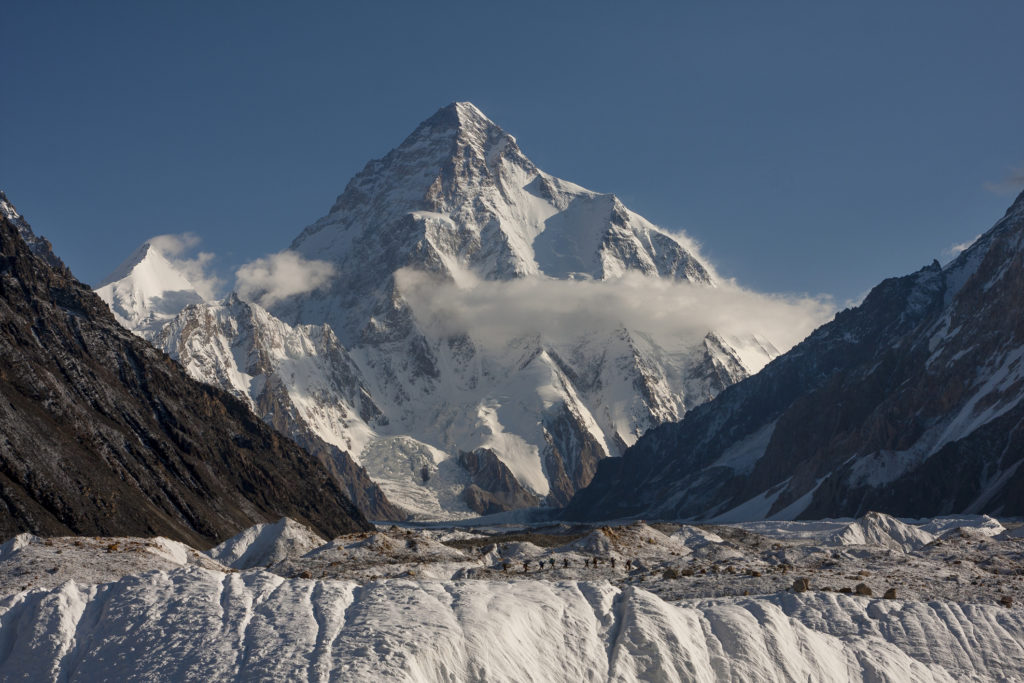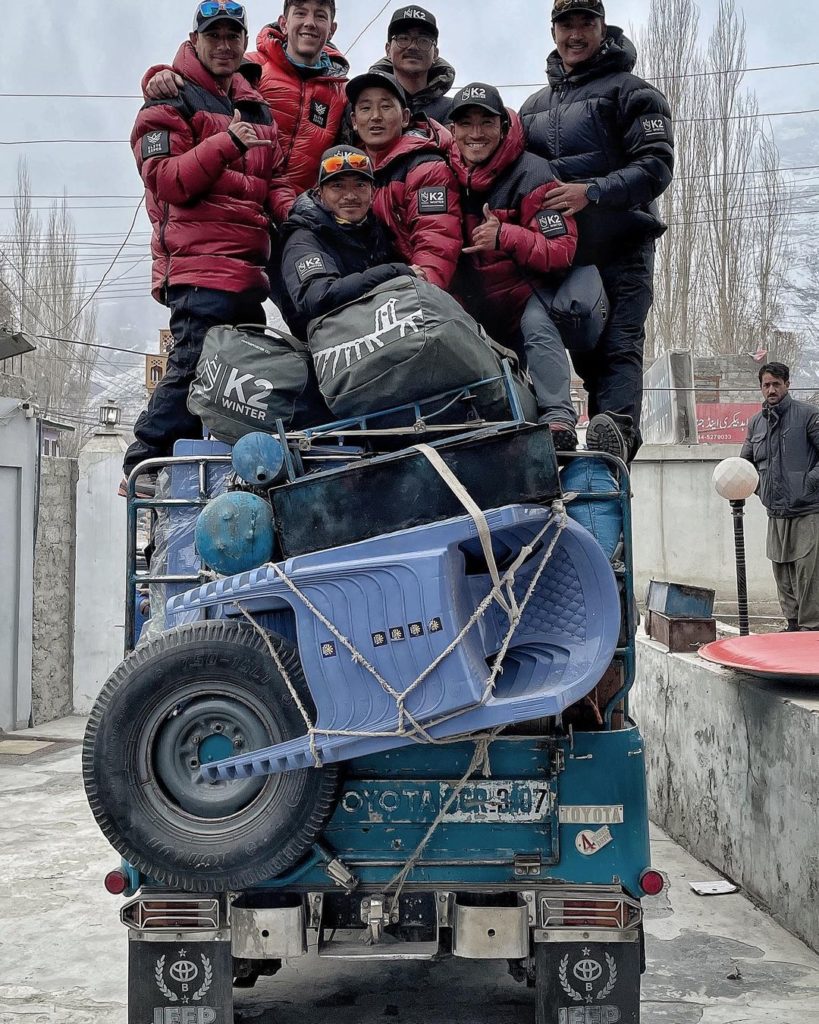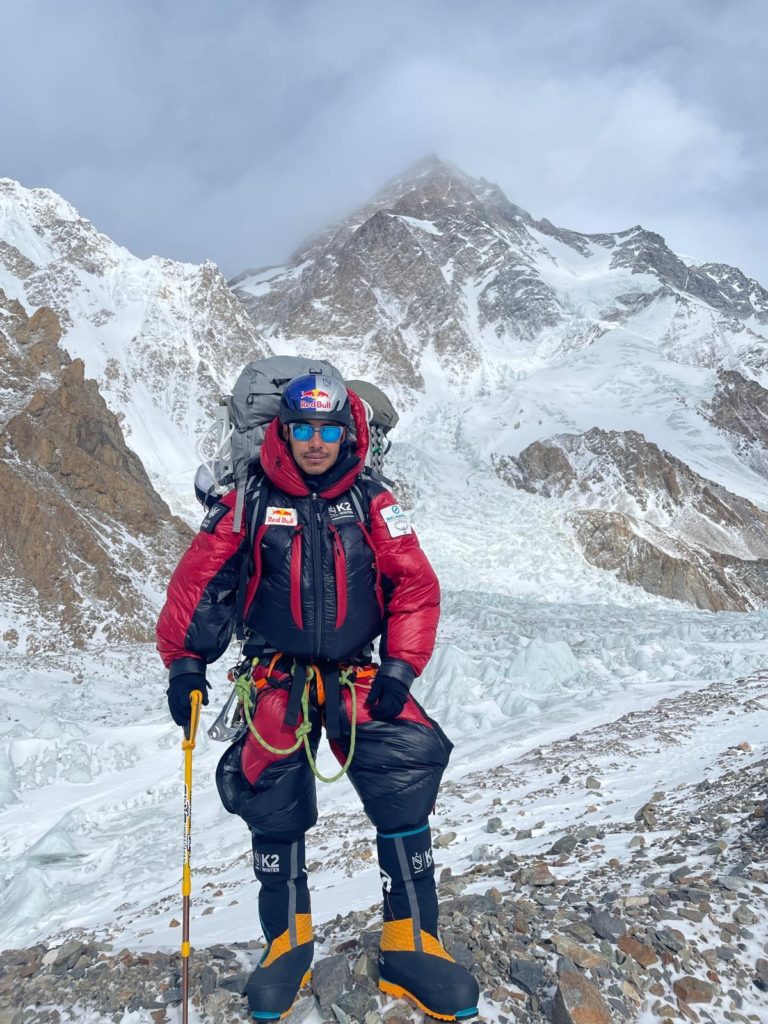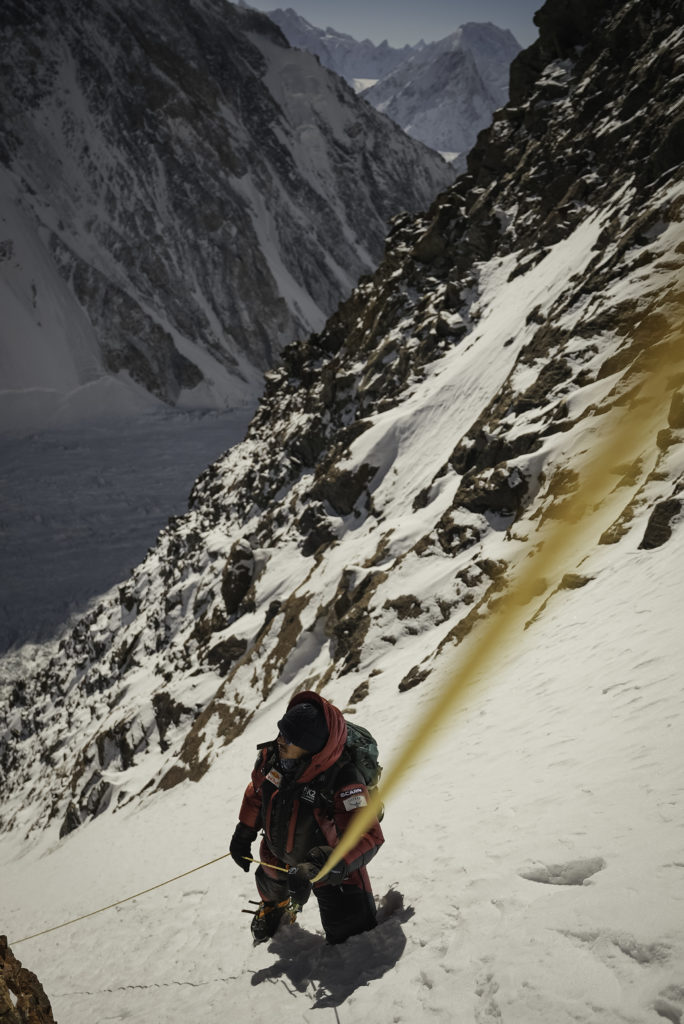Some challenges are so physically demanding that they are impossible for people to do. Until someone does it anyway. Climbing the deadly K2 in the middle of winter was one such challenge. Nimsdai took up the challenge...
Text Gerben Bijpost Photography Osprey Europe & Nimsdai
Nirmal 'Nims' Purja, best known as Nimsdai, is a phenomenon. It is not only the people who admire his achievements who think so; he thinks so himself. GW spoke to the Nepalese mountain climber shortly after completing the expedition that was hitherto thought impossible. It was already the 21st expedition above 8,000 metres that the only 37-year-old Nimsdai led. Of those 21, as many were successful and all his team members also came home as they left their homes. That is, with all their fingers and toes still attached, something that is by no means a given in this kind of adventure. Nimdai is especially a phenomenon because of the many world records that are to his name. Such as climbing all fourteen eight-thousanders (mountains higher than 8000 metres) in the world, in a period of only six months and six days. In doing so, he smashed the old world record, which stood at just under eight years. He also climbed the summits of Mount Everest ánd Lhotse ánd Makalu within a crazy 48 hours.
Energetic
The conversation with Nimsdai, who is on the other side of the world, is via Skype. His English is impeccable, but every now and then his Asian accent is clearly audible. He sounds energetic, enthusiastic, confident. Through my Dutch ears, he also sometimes sounds immodest, in a way that footballer Zlatan Ibrahimovitsch, for instance, can so characteristically do. But listening to him, I realise that it has nothing to do with being immodest, when you say about yourself that you are better at something than others and you actually are. You are simply being realistic and honest. And that is more to be appreciated than false modesty.

Deadly
The summit of Mount Everest (8848 metres) has been reached by more than 6,500 people. That of the infamous K2 (8611 metres) by just 337. Since 1987, there have been a few attempts to reach the latter summit, on the Sino-Pakistani border in the Karakoram, during winter. None of them succeeded. Climbers characterise it as the most hostile environment for humans on the planet, where the smallest mistake can have huge consequences. With temperatures dropping to minus 65 degrees, losing a glove means a frozen hand within minutes. And as soon as your bare skin even briefly touches the steel of an ice axe, you're likely to rip the skin off your limbs. And then there's the wind, which always blows harder and more unpredictably here than on other eight-thousanders and can blow a climber who lets his guard down like a fluff from his flank. What the wind also blows off the mountain flanks is snow, so climbers often have to make their way over rock with rock-hard ice cover, adding to the difficulty factor. It all couldn't stop Nimsdai and his team ...
Congratulations on your achievement! Was it harder or easier than you expected?
I had no expectations. I never look in advance at previous expeditions that have failed. That doesn't work for me. It's like the selection procedures for the British Special Forces, which I once participated in. That involves two hundred top soldiers coming together to be tested. A maximum of six of them will pass. If you then listen beforehand to the 194 who failed, you won't even try again. People who fail will always make a challenge sound tougher and more difficult. That's why I'm just going to do it. I want to find out for myself how difficult something is.
Army
At the age of 20, Nimsdai entered the British army, first as a gurkha (a collective name for soldiers of Nepali or South Asian descent), later becoming part of the Special Boat Service, an elite unit within the Royal Navy. Nimsdai was the first gurkha to successfully pass the extremely tough selection procedure for this SBS unit. He then went on to develop into cold-weather warefare specialist, to bid farewell to the army in 2018 and focus entirely on mountaineering.
 What has your military training contributed to your success as a mountaineer?
What has your military training contributed to your success as a mountaineer?
I learned to operate under the most difficult and toughest conditions. It trains you to always make the right decision, no matter what.
Did it also teach you to mentally shut off from danger?
On the contrary, you are always aware of the danger. You should be. There are countless risks you have to factor in. Situations can change at lightning speed. You have to recognise those dangers and adjust your actions accordingly. That can mean the difference between life and death. Every second you forget the danger can be fatal.
You conquer mountains at a faster pace than anyone has ever done. Doesn't that call for a new name: mountain runner instead of mountain climber?
Haha, that is indeed what they sometimes call me. Or also appropriately: Endurance Man.
Does fast climbing offer advantages as you spend less time in the death-zone (the altitude where oxygen pressure is so low that your body slowly dies) resides?
It is especially useful when the weather turns or it gets colder quickly. But other risks remain the same. The mountain is what it is and the route remains just as dangerous. When your time has come, your time has come. Speed doesn't change that.
 Why doesn't everyone climb that fast?
Why doesn't everyone climb that fast?
Haha, because not everyone is Nimsdai, my brother. I operate on a different level, next level. Not everyone can be Usaine Bolt or Muhammad Ali. Some people can do things that others cannot. I am grateful that I have a fantastic body, which can adapt to great heights so much better than other people's. And the fact that I have been trained by the best of the best, the British Special Forces. That too offers me huge advantages.
Comparing yourself to two of the greatest sports legends ever. Immodest? That's just how you look at it. Perhaps said sports names are not even big enough to put Nimsdai's achievements in proper perspective. After all, Ali and Bolt took on other people, while Nimsdai took on a far more dangerous opponent: Mother Nature herself.
What is your main key to your success: discipline, talent or mindset?
To achieve such goals, they must all next-level Be. Discipline is not enough. If someone has to wake me up to work out, that's not good enough. I have to do it myself. Motivation and discipline have to come from within yourself. Then there is talent, experience and knowledge. But the most important thing is that you are always honest with yourself. Because in the death-zone or on a steep slope, a brave decision can ensure a successful expedition. But it can also kill you if you overestimate yourself. Being honest with yourself is crucial. And that is sometimes a very narrow line.
Singing
Those who visit Nimsdai's intagram account will discover a recent video on it showing ten climbers arm in arm singing the Nepali national anthem to complete the final metres to the summit of K2. The temperature on the ground at that time is minus 40 degrees Celsius. Their voices are muffled by oxygen masks, except from one of them. He is slightly ahead, wearing a red down jacket and his face is uncovered in the bright sunlight.
You were the only one to complete this extreme expedition without using supplementary oxygen. Why?
Because I can. Normally, you climb much slower when you don't use supplemental oxygen. I had a team of experienced sherpas (local mountain guides) with me. Sherpas are like machines, high-altitude climbing machines. And when they use extra oxygen, they even become super-machines. I not only had to keep up with these men, I also had to lead them. In the end, I reached the summit at the same time as these amazing climbers. Details like that do make this achievement extra special.
Is climate change something you also observe during your expeditions?
During this trip on the K2, I didn't see any of that. But during other climbs I saw it regularly. Glaciers melting or sometimes already completely turned into lakes. The world is warming up. This is something I observed with my own eyes while standing on the ground.
In 2019, there was much ado about a photo taken on Mount Everest. Long queues of people wanting to get to the top. Is it getting too crowded on that mountain?
No, the number of people climbing this mountain today is not much higher than in 2011. And that is still only a fraction of the number climbing Mont Blanc. But in 2019, there were only two days when the weather was good enough to make a summit attempt. That's when those infamous photos were taken, with that traffic jam of climbers. Remember, Mount Everest is a huge mountain, a giant. There is plenty of room there. It just needs to be managed better. By independent people. The various fixed-line routes need to be optimised so that climbers have more options. Then these numbers are no problem at all.
Whereas Mount Everest is known as the world's highest mountain, K2 enjoys a reputation as one of the most dangerous mountains. How do you view it?
Of the five highest mountains in the world, K2 is the deadliest. They also call it savage mountain. This is for good reason. It is super steep, in winter the rocks are covered in blue ice, the weather is completely unpredictable and it is extremely cold. For every four climbers who reach the summit, one dies. That says it all.
The successful summit attempt by Nimsdai and his team took place on 16 January 2021. On the same day, much lower on the mountain, experienced Spanish mountaineer Sergi Mingote met his death when he plunged down during his descent. Barely three weeks after the successful summit attempt, three also highly experienced climbers John Snorri (Iceland), Juan Pablo Mohr (Chile) and Muhammad Ali Sadpara (Pakistan) lost contact at 8000 metres. No trace of them has been recovered to date. The K2 may have been defeated once in the winter, but it continues to take its heavy toll mercilessly ...
Does that science scare you or is that extreme danger something that attracts you?
No, there is always fear, even with me. And that is good. Fear humbles you. Fear makes you make good risk assessments. Fear is fine, as long as you can control it and not be controlled by it.
 Expeditions like this are sponsored by commercial companies. Does that give extra pressure to succeed?
Expeditions like this are sponsored by commercial companies. Does that give extra pressure to succeed?
For this expedition, I had partners like Redbull, Scarpa and Osprey. They were like family to me, as involved as they were. Thanks in part to them, I was able to make the impossible possible. But I never felt that as extra pressure, certainly not.
How to select the right gear for an extreme mission like this?
I just want to have the best available on this planet. At minus 65 degrees, that is a necessity, otherwise you don't even need to start the climb. That's why, for example, I worked with Osprey to design a backpack that made it possible for me to carry over 35 kilograms of equipment all the way to the summit. A comfortable backpack makes what is heavy at such a moment just a little more bearable.
What you have achieved now was considered impossible for a long time. And you already had so many records to your name. Are there any new challenges to be found now?
Just wait and see, my brother, I will definitely come back with a surprise. That's all I'm going to say about it. Stay tuned!
We say goodbye, but just before disconnecting, Nimsdai quickly comes up with a surprising request. Whether I want to tell him that the money he received from various organisations and companies as a token of appreciation for his successful expedition will be donated to good causes. "Such as training young talents and supporting than people with covid problems. I think it is important to convey a positive message." At this reported.
Also watch the breathtaking film 14 Peaks: Nothing is Impossible on Netflix now!
Check: www.nimsdai.com and www.ospreyeurope.com


